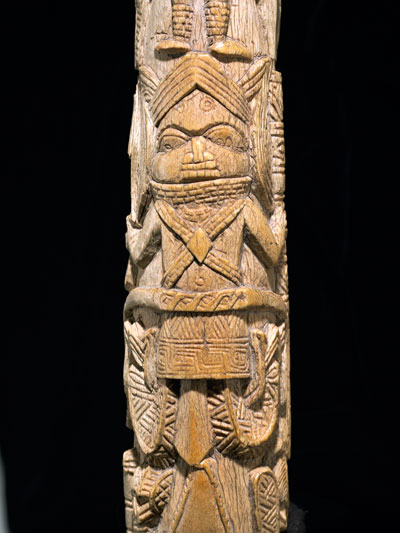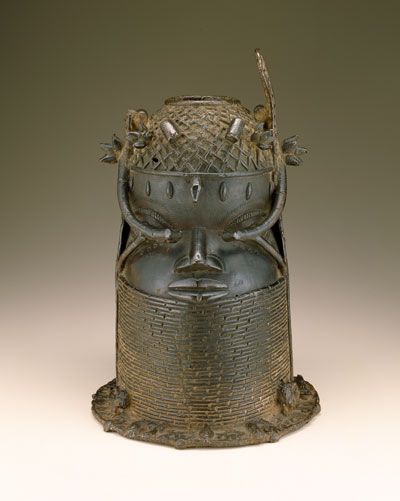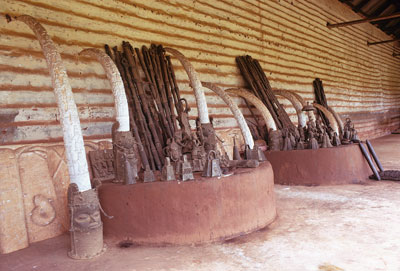

|
|
 Benin ancestral altar tusks were carved with registers of relief figures, animals and motifs. In the center of this tusk are the oba (king) and his attendants. The oba is shown with the legs of a mudfish, emphasizing his divine powers of transformation and survival. These kinds of images conveyed a coded message that was intended more for the ancestors than for the relatively few living people who were allowed to view the altars. Some altar tusks were supported by cast copper alloy heads representing an oba. Based on motif-indexed research, this tusk is tentatively dated to the reign of Oba Adolo, about 1850. Its iconography suggests it was used on an altar dedicated to a past oba, rather than to a queen mother or an ezomo, a major chief. |
|

|

|
 This head once supported an ivory tusk. A wood peg extended from inside the tusk through the hole in the top of the head and into the clay of the altar. An emphasis on elaborate regalia is typical of 19th-century Benin art. Cast objects are often large and heavy as well. Symbols of royal power and sacrifice, such as a kola nut, an elephant trunk, a leopard and a mythical fish, decorate the base of this head. |
 This 1970 photograph depicts in the foreground the altar to the Oba Ovonramwen (reigned 1888-97; d.1914). The original altar groupings were destroyed in 1897 when many objects were removed by the British military and a fire swept the palace. With the restoration of the Benin monarchy in 1914, the new Oba, Eweka II (reigned 1914-1933), commissioned heads and other objects for an altar dedicated to his father, Oba Ovonramwen. Image credits: Tusk Benin kingdom court style, Edo peoples, Nigeria c. 1850 Ivory Height 160.65 cm (63 1/4 in.) National Museum of African Art, purchased with funds provided by the Smithsonian Collections Acquisition Program, 96-30-1 Commemorative head of a king Benin kingdom court style Edo peoples, Nigeria 19th century Copper alloy Height: 38.1 cm (15 in.) National Museum of African Art, gift of Joseph H. Hirshhorn to the Smithsonian Institution in 1966, 85-19-7 Benin City, Nigeria
Photograph by Eliot Elisofon, 1970 EEPA EECL 7595 Eliot Elisofon Photographic Archives, National Museum of African Art |
Back: Home |
Onto: Tusk/Hat comparision |